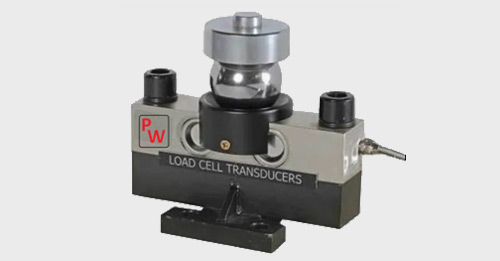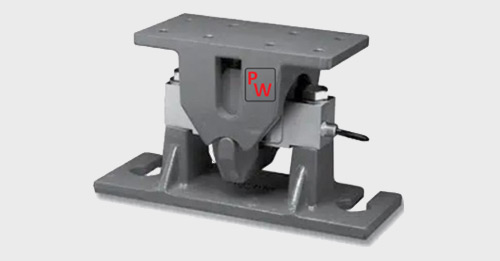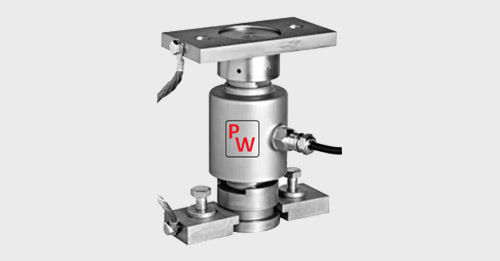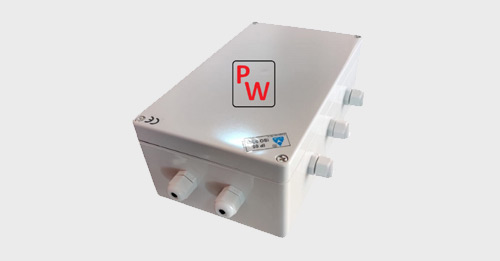Spares
We are Manufacturer, Supplier, Exporter of Junction Box, Loadcell. Our setup is situated in Pune, Maharashtra, India.
Weight indicators seamlessly transform electrical signals from load cells into precise weight readings, ensuring accuracy and reliability in various applications.- Loadcell :
- Description :
- A load cell is a transducer that converts a force, such as weight or load, into an electrical signal. This technology is crucial for weighbridges, which are large-scale weighing systems used to measure the weight of vehicles and their contents.
- Types of Load Cells for Weighbridges :
- I. Analog Load Cells :
- a) Provide a continuous output signal that correlates with the applied weight.
- b) Typically, more cost-effective but may require additional signal conditioning for precise measurements.
- II. Digital Load Cells:
- a) Convert load measurements directly into a digital signal.
- b) Offer higher accuracy and ease of integration with digital systems, making them suitable for modern applications.
- Key Features :
- A. Accuracy : Load cells offer high precision, ensuring reliable weight measurements.
- B. Durability : Built to withstand harsh outdoor conditions, weighbridge load cells are typically dust, water and shock resistant.
- C. Capacity : Available in various capacities to accommodate different vehicle sizes and weights.
- Maintenance and Calibration :
- Regular maintenance and calibration are essential to ensure optimal performance and accuracy of load cells. This includes checking for physical damage, recalibrating after heavy use, and ensuring proper electrical connections.
- Conclusion : Investing in quality load cells for your weighbridge is vital for ensuring accurate, reliable, and efficient vehicle weight measurement. With various options available, choosing the right load cell type can significantly enhance your operations and data management.
- Types of loadcell :
- I. Double-Ended Shear Beam Load Cells :
- Double-ended shear beam load cells are widely used in various applications, including weighbridges, due to their accuracy and robust design. Here's a detailed look at two popular designs-ball and cup type and rocker assembly type.
- Types of loadcell :
- a) Ball and Cup Type Load Cell :
- Description :
- The rocker assembly type load cell features a pivoting mechanism that allows for load measurement while accommodating slight misalignments. This design enhances the cell's ability to handle dynamic loads and fluctuating conditions.
- Key Features :
- A. Flexibility : The rocker design allows for slight misalignment without affecting accuracy.
- B. Robustness : Built to endure harsh environments, making it ideal for industrial applications.
- C. Easy Installation : The design facilitates straightforward integration into weighbridge systems.

- b) Rocker Assembly Type Load Cells :
- Description :
- The ball and cup type load cell employs a unique design that allows for efficient load distribution and minimal friction. This design features a spherical ball resting in a cup, allowing for free movement while maintaining stability.
- Key Features :
- A. High Accuracy : Excellent sensitivity to load changes, providing precise measurements.
- B. Stability : The spherical interface reduces wear and enhances the lifespan of the load cell.
- C. Multi-Directional Load Measurement : Capable of measuring loads from various directions, making it versatile for different applications.

- II. Compression Type Load Cells :
- Description :
- Compression type load cells are designed to measure compressive forces. They are typically used in applications where the load is applied directly along the axis of the cell.
- Key Features :
- A. Compact Design : Ideal for pit type weighbridge installations.
- B. High Load Capacity : Available in a wide range of capacities, suitable for heavy loads.
- C. Accurate Measurements : Delivers reliable and consistent results for static and dynamic weighing.
- Conclusion :Double-ended shear beam load cells, including the ball and cup type and rocker assembly type, offer reliable solutions for accurate weight measurement in various applications. Additionally, compression type load cells provide versatility for specific weighing needs. Selecting the right type depends on your specific requirements, including load capacity, environmental conditions, and application type.

- Junction Box :
- Description :
- A junction box is an enclosure that houses electrical connections and facilitates the safe distribution of electrical power and signals. It protects wiring from environmental factors and physical damage while providing a central point for connecting multiple circuits.
- Key Features :
- A. Protection : Shields electrical connections from dust, moisture, and mechanical impact.
- B. Organization : Keeps wiring organized and accessible for maintenance and troubleshooting.
- C. Safety : Reduces the risk of electrical hazards by containing potential short circuits or faults.

